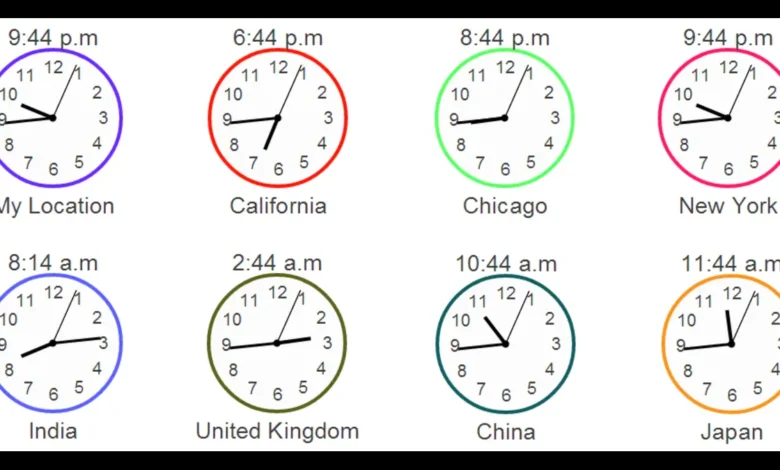Understanding Analog Time: A Comprehensive Guide to Telling Time the Old-Fashioned Way in the USA

Introduction to Analog Time
Time is a concept we often take for granted, yet it shapes every aspect of our lives. In an age dominated by digital clocks and smartphones, the charm of analog time seems to fade into the background. But there’s something uniquely satisfying about glancing at an old-fashioned clock with its hands gracefully moving around a circular face. Understanding how to read these traditional timepieces not only connects us to history but also offers invaluable skills in today’s fast-paced world.
This guide will delve deep into the fascinating realm of analog time, exploring its rich history, mechanics, and significance. Whether you’re looking to brush up on your clock-reading skills or share this knowledge with future generations, you’ve come to the right place. Let’s embark on this journey together!
The History of Telling Time
The concept of measuring time dates back to ancient civilizations. Early humans relied on natural indicators like the sun and moon. The movement of celestial bodies guided their daily activities.
Egyptians invented sundials around 1500 BCE, marking significant progress in timekeeping. They divided the day into smaller segments, allowing for more precise measurements.
By the Middle Ages, water clocks known as clepsydras gained popularity across cultures. These devices measured time based on flowing water and were crucial for various tasks.
The invention of mechanical clocks in Europe during the 14th century revolutionized how people understood time. This technology paved the way for standardization, leading to a more organized society.
Throughout history, telling time has evolved alongside human innovation. Today’s digital formats coexist with traditional analog methods, reflecting our diverse relationship with this essential aspect of daily life.
How Does an Analog Clock Work?
An analog clock operates on a simple yet fascinating mechanism. At its core, it relies on gears and springs to measure time accurately.
When you wind an analog clock, you’re tightening a spring. This stored energy slowly releases, driving the gears. These gears are connected to the hands of the clock, allowing them to rotate smoothly around the dial.
The hour hand moves more slowly than the minute hand because it travels a shorter distance in each cycle. A full revolution of the minute hand takes just 60 minutes while the hour hand completes its loop in 12 hours.
Oscillating components like pendulums or quartz crystals keep everything in sync, ensuring precision. Some clocks use weights instead of springs for power.
This intricate dance between mechanical parts creates a beautiful harmony that defines how we perceive time visually and audibly with ticking sounds.
The Basic Parts of an Analog Clock
An analog clock comprises several key components that work harmoniously to tell time. The face of the clock is usually circular, marked with numbers or ticks representing hours and minutes.
The hour hand moves slowly around the dial, taking 12 hours to complete a full rotation. Its shorter length distinguishes it from the minute hand, which travels at a quicker pace and takes just one hour for its cycle.
The second hand often sweeps smoothly across the face, providing real-time updates every second. Some clocks feature this as a separate component, while others combine it with the minute hand in unique designs.
Behind these hands lies the movement mechanism. This internal system drives their rotation based on various power sources like batteries or winding springs.
Protecting everything is the glass cover or transparent material that keeps dust away while allowing clear visibility of time’s passage.
Reading and Telling Time on an Analog Clock
Reading an analog clock may seem daunting at first, but it’s quite simple once you get the hang of it. Begin by identifying the hour hand and the minute hand. The shorter hand indicates the hour, while the longer one points to minutes.
When telling time, start with the hour. Look where the hour hand rests between two numbers. If it’s slightly past 3 but hasn’t reached 4 yet, you would say it’s three o’clock something.
Next, focus on minutes. Each number represents five-minute increments. Count from 12 clockwise—1 is five minutes past, 2 is ten minutes past, and so forth.
To combine both readings: if your hour hand is just after three and your minute hand points to four, that means it’s three twenty. Understanding this method transforms a traditional practice into an easy task!
Common Misconceptions About Analog Time
Many people believe that reading analog time is outdated and too complicated. This assumption often stems from a lack of familiarity with traditional clocks.
Another misconception is that only the young struggle to tell time on an analog clock. In reality, adults can also find it challenging if they haven’t practiced recently.
Some think digital clocks are more accurate than their analog counterparts. However, both types measure the same passage of time; it’s just a matter of preference in presentation.
There’s also a belief that using an analog clock isn’t practical in today’s fast-paced world. Yet, these classic devices offer timeless elegance and foster mindfulness about our daily routines.
People may assume children won’t understand how to read an old-fashioned clock. With proper guidance and practice, many kids can master this skill quite easily!
Benefits and Advantages of Using Analog Time
Using analog time offers a range of benefits that many modern devices overlook. For starters, reading an analog clock develops critical thinking and spatial awareness skills in children. It encourages them to understand the concept of time beyond mere digits.
Analog clocks are also aesthetically pleasing. They can enhance the decor of any room with their classic designs and intricate details. A beautiful wall clock serves as both a functional item and a piece of art.
Moreover, they provide a sense of mindfulness. An analog clock encourages users to engage more actively with time, fostering an appreciation for each passing moment instead of simply glancing at numbers on a screen.
Relying on analog time reduces distractions associated with digital devices. With fewer notifications vying for attention, you may find it easier to focus on tasks without interruptions from technology.
Tips for Teaching Children to Tell Time on an Analog Clock
Start with a fun introduction to the analog clock. Show your child an actual clock and discuss its features. Make it exciting by explaining how time works in everyday life.
Begin by teaching them the hour hand and minute hand separately. Use simple phrases like “the short hand” for hours and “the long hand” for minutes. This makes it easier to remember their functions.
Use real-life scenarios, such as planning activities or setting bedtime, to help them grasp concepts of passing time.
Encourage practice through games that involve drawing clocks or matching times with digital counterparts. Create a reward system for mastering each step; little incentives can keep their interest alive.
Be patient during this process, allowing plenty of opportunities for questions and exploration. Celebrate small victories together as they learn this essential skill!
Conclusion: Embracing the Tradition of Analog Time
Analog time holds a special place in our daily lives. Despite the rise of digital devices, the charm of an analog clock remains unmatched. These clocks represent more than just a way to tell time; they embody tradition and craftsmanship.
Embracing analog time can enhance our appreciation for moments as they pass. It encourages us to slow down and engage with our surroundings. The act of reading an analog clock fosters mindfulness, making us more aware of the present.
For children, learning how to read an analog clock is both educational and fun. It builds essential skills that will serve them well throughout their lives. As we teach the next generation about this timeless art, we preserve a valuable connection to history.
By incorporating analog clocks into our homes or workplaces, we celebrate not only functionality but also aesthetics. They come in various designs that add character and warmth to any space.
So whether you’re glancing at your wristwatch or admiring a wall-mounted piece, remember that each tick represents continuity—an invitation to cherish every second spent in life’s journey.
you may also read
usainfotime.com





